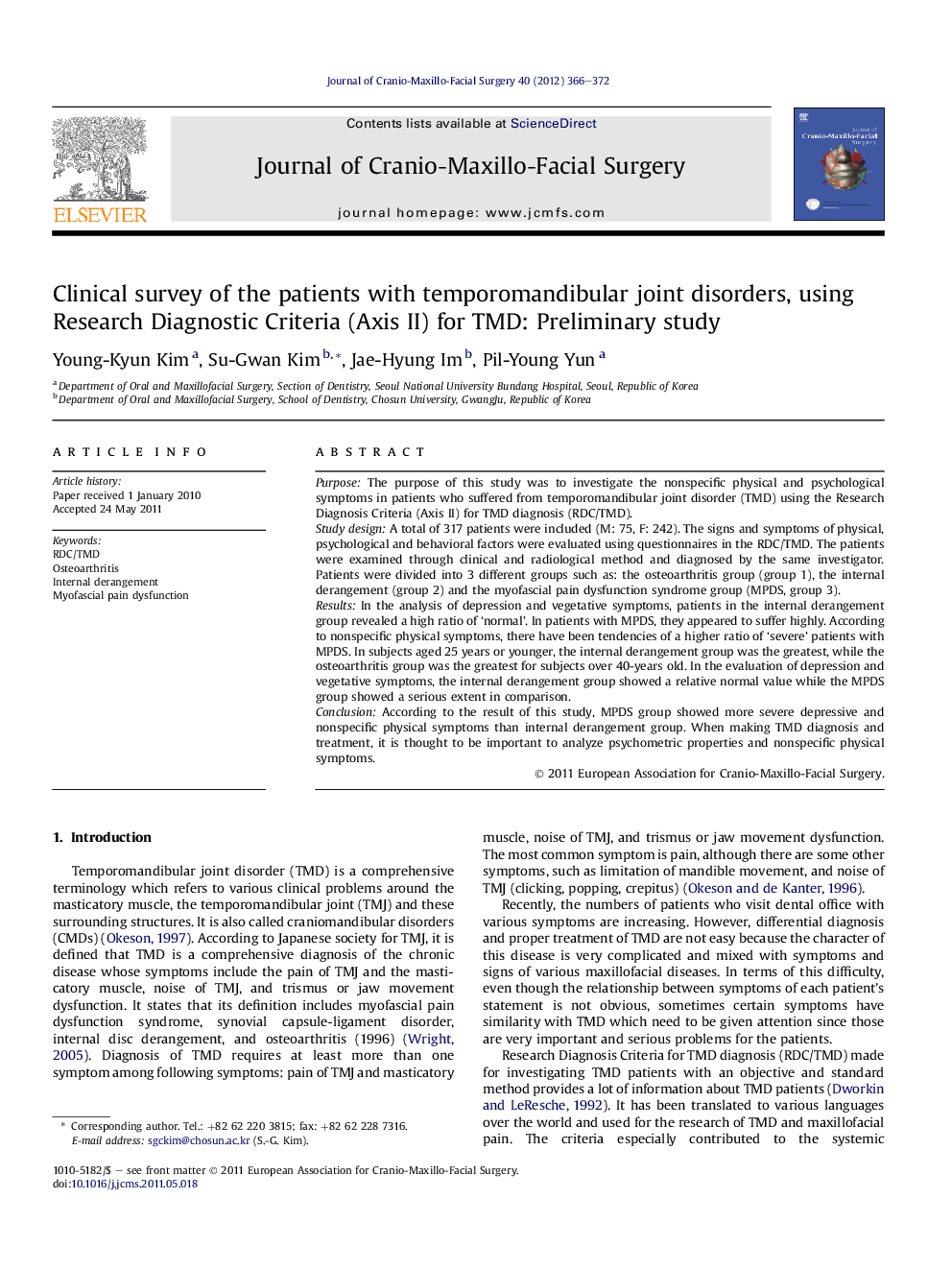| Article ID | Journal | Published Year | Pages | File Type |
|---|---|---|---|---|
| 3143136 | Journal of Cranio-Maxillofacial Surgery | 2012 | 7 Pages |
PurposeThe purpose of this study was to investigate the nonspecific physical and psychological symptoms in patients who suffered from temporomandibular joint disorder (TMD) using the Research Diagnosis Criteria (Axis II) for TMD diagnosis (RDC/TMD).Study designA total of 317 patients were included (M: 75, F: 242). The signs and symptoms of physical, psychological and behavioral factors were evaluated using questionnaires in the RDC/TMD. The patients were examined through clinical and radiological method and diagnosed by the same investigator. Patients were divided into 3 different groups such as: the osteoarthritis group (group 1), the internal derangement (group 2) and the myofascial pain dysfunction syndrome group (MPDS, group 3).ResultsIn the analysis of depression and vegetative symptoms, patients in the internal derangement group revealed a high ratio of ‘normal’. In patients with MPDS, they appeared to suffer highly. According to nonspecific physical symptoms, there have been tendencies of a higher ratio of ‘severe’ patients with MPDS. In subjects aged 25 years or younger, the internal derangement group was the greatest, while the osteoarthritis group was the greatest for subjects over 40-years old. In the evaluation of depression and vegetative symptoms, the internal derangement group showed a relative normal value while the MPDS group showed a serious extent in comparison.ConclusionAccording to the result of this study, MPDS group showed more severe depressive and nonspecific physical symptoms than internal derangement group. When making TMD diagnosis and treatment, it is thought to be important to analyze psychometric properties and nonspecific physical symptoms.
